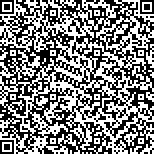下载中心
优秀审稿专家
优秀论文
相关链接
摘要

全景相机车载移动系统可以获取带有精确位置和姿态信息的序列全景影像,针对该影像数据,提出一种构建全景核线影像的方法,描述了在球面全景模型下构建全景影像之间核线几何约束的过程,并推导出具体的公式,然后在两张全景核线影像之间使用SIFT算法匹配同名点,最后根据摄影中心、像点、物点3点共线的原理,推导出全景影像的共线公式,利用前方交会的原理计算出物点的空间3维坐标。实验结果表明,本文方法可以降低全景影像匹配的难度,提高匹配点数量和精度,适用于实现基于全景影像的量测等功能。
Vehicle-mounted mobile system based on panoramic camera can obtain panoramic images with exact position and posture information. Based on these data, we propose a method to generate panoramic epipolar images. First, we describe the process of constructing geometric constraints between two panoramic images in the spherical panorama model. Then the two panoramic epipolar images are matched using the SIFT algorithm. Finally, according to the principle that the center of photography, namely image point and object point, are collinear, the collinearity equation of the panoramic images are deduced and the three-dimensional coordinates are calculated by the principle of the forward intersection.
The following steps are used to generate panoramic epipolar images. First, the baseline direction is determined according to the position and attitude of two panoramas. The Z axis of the panorama is then turned to the baseline direction by two rotations. Finally, the panorama is projected to the plane image according to the new coordinate.
The two panoramic epipolar images are matched using the SIFT algorithm to remove certain error matching points by panoramic epipolar geometry. This paper does not apply the conventional collinearity equations, but derives the relations between image point and object point in spherical model, and then in a unified coordinate system, derives the relations between corresponding image points in panoramic images and object point. Finally, the three-dimensional coordinates are calculated by the principle of forward intersection. The coordinates(three values: X Y Z)for a pair of corresponding points can be calculated by four equations(one image corresponds to two equations).
Three experiments were designed to verify the validity of the methods. In the first experiment, generating panoramic epipolar images, the column numbers of the homonymous points in two panoramic epipolar images are close, indicating that the epipolar images are correct. In the SIFT matching experiment, no obvious error matching points were observed for the panoramic epipolar image matching. In the final experiment, the three-dimensional coordinates was calculated using the panoramic intersection. The object space points calculated with the points in the point cloud were then compared to obtain the coordinate accuracy of about 10 cm to 20 cm.
Experimental results showed that the proposed method to generate panoramicepipolar images is effective, achieves the correct panoramic collinearity condition equations, can reduce the difficulty in panoramic image matching, improves the quantity and precision of the matching, and can be used to implement measurement based on panoramic images.

